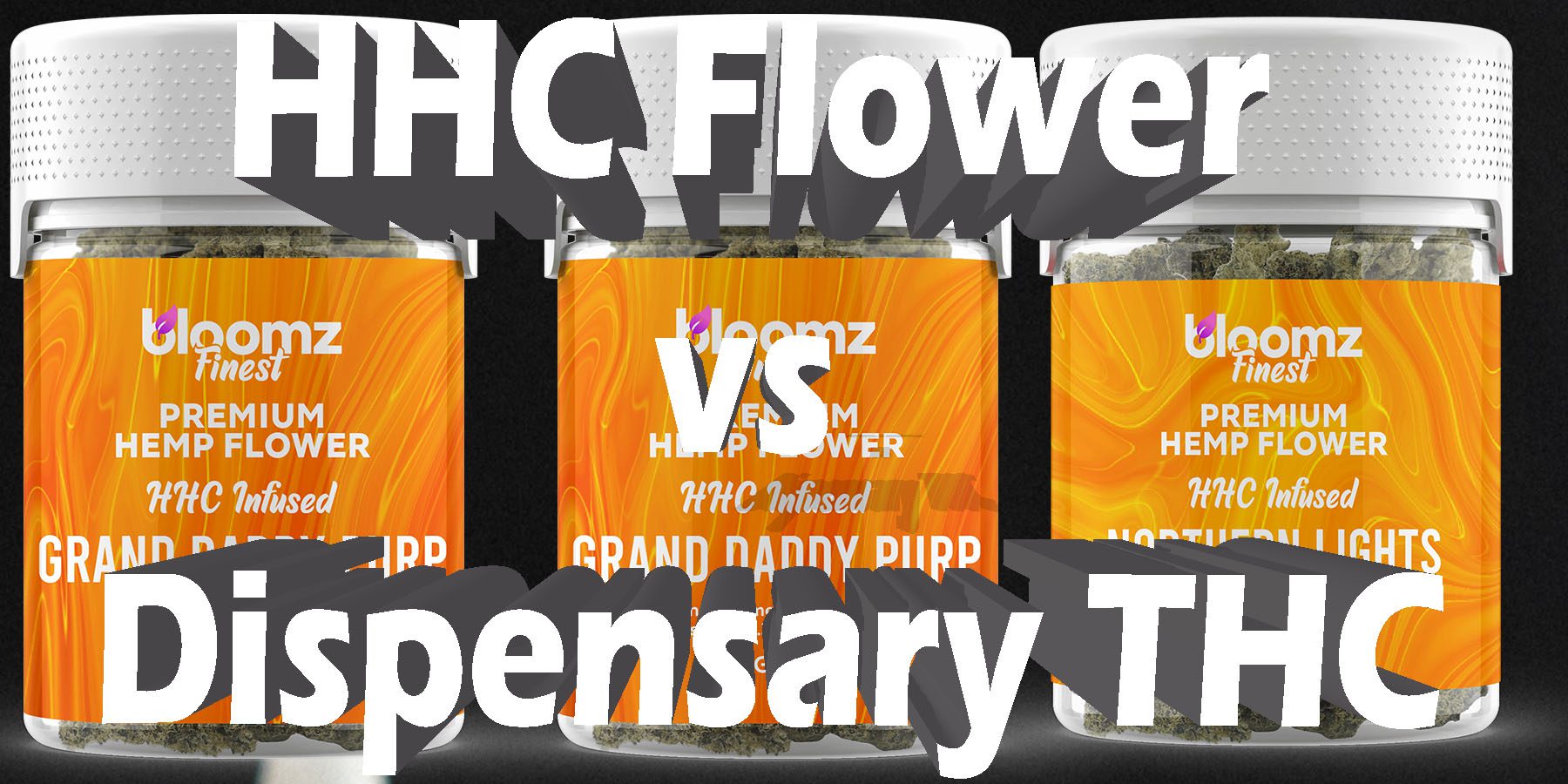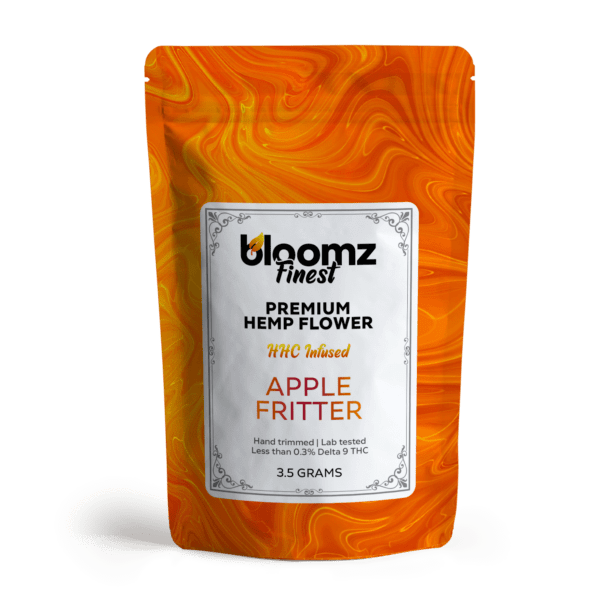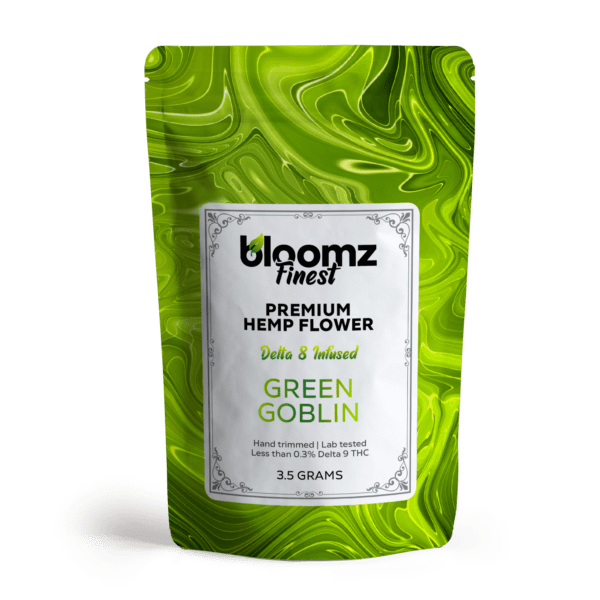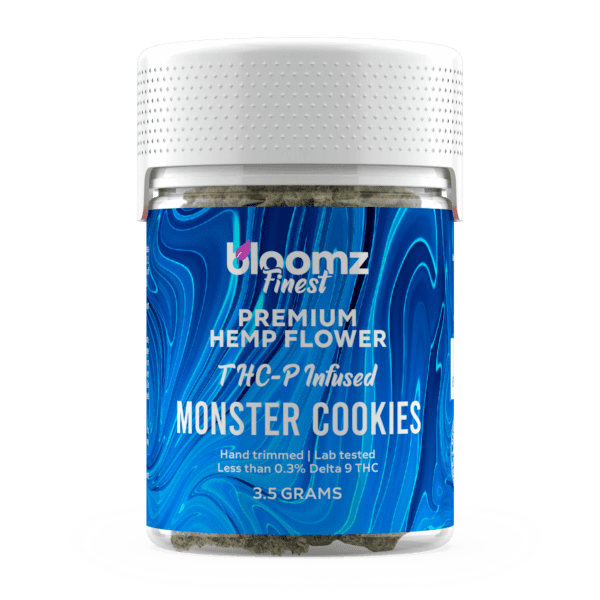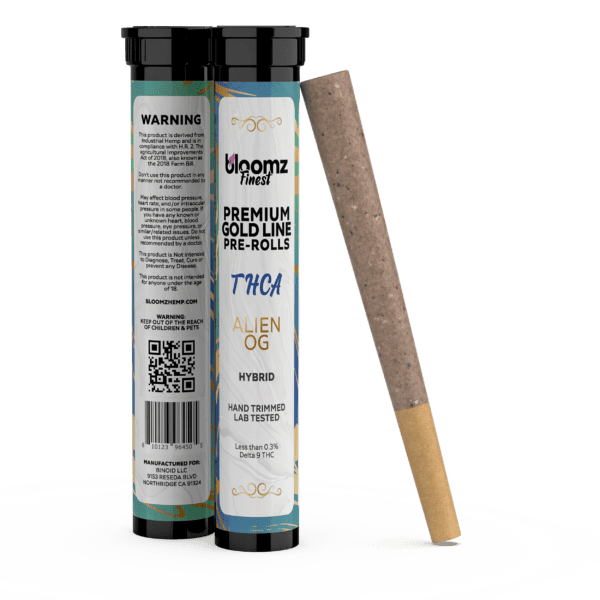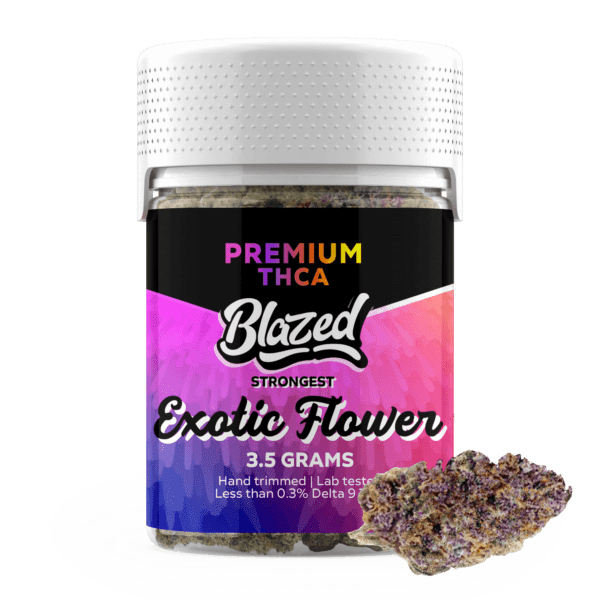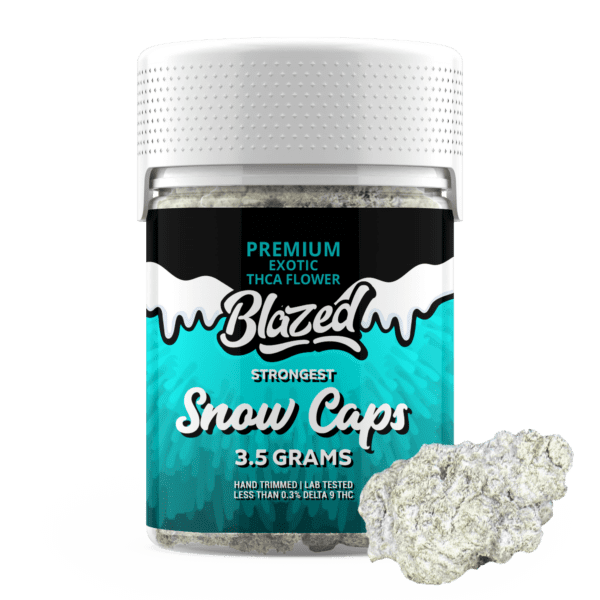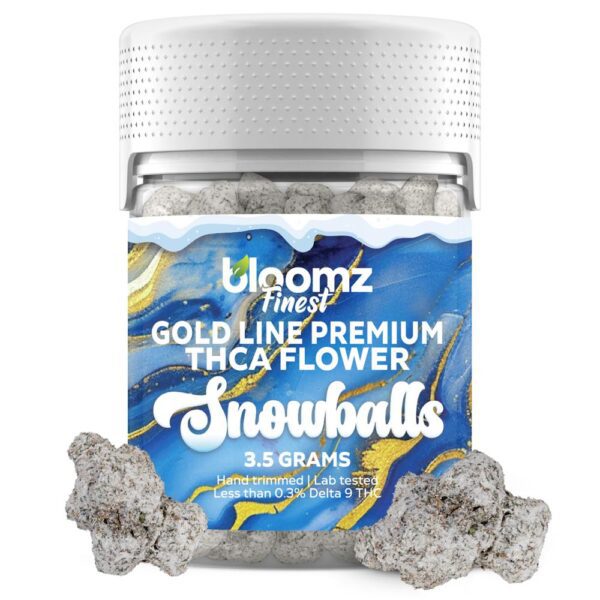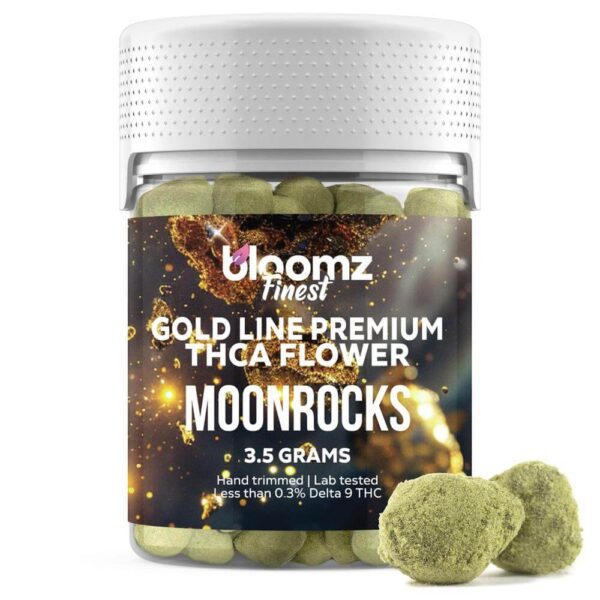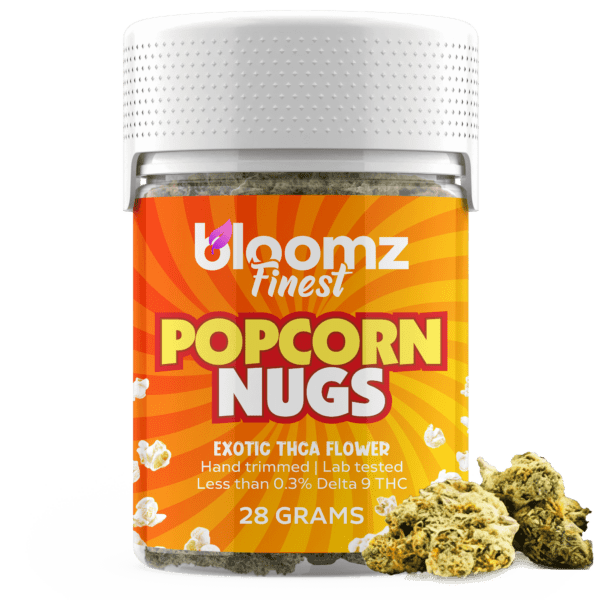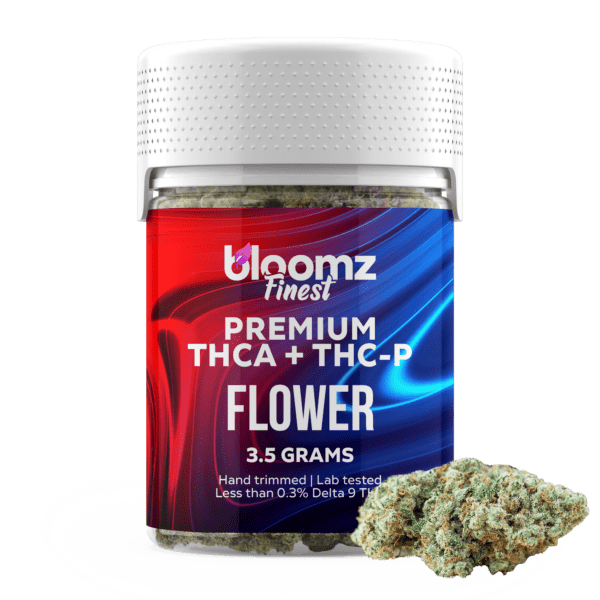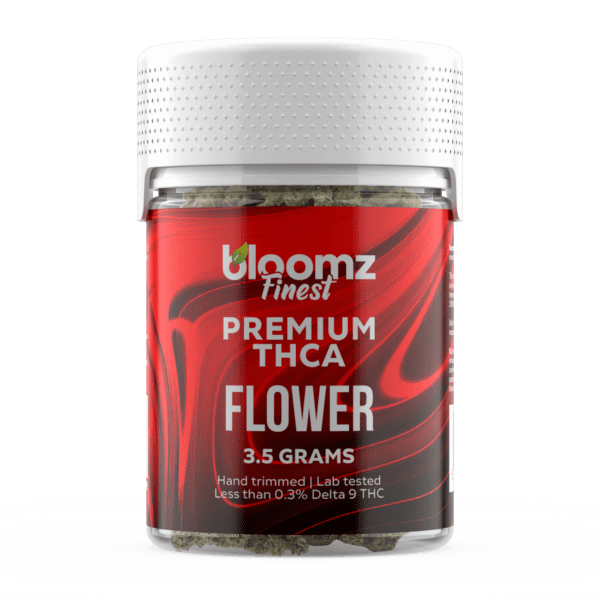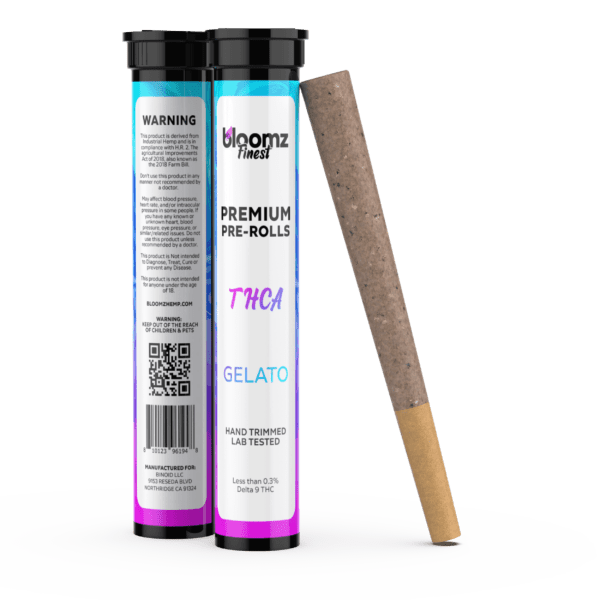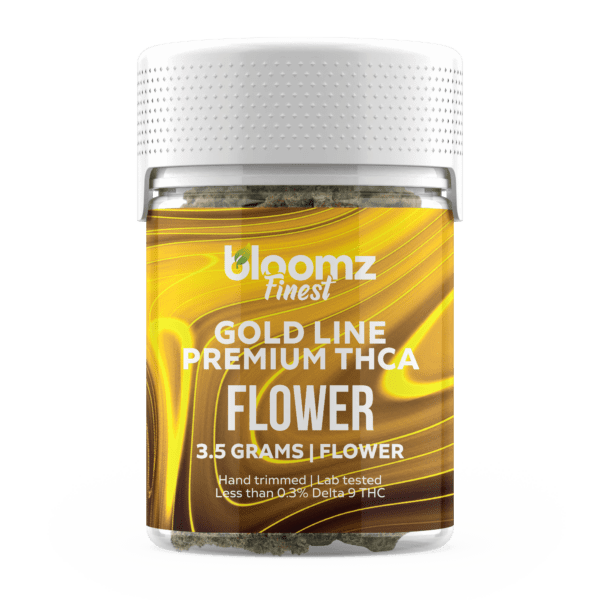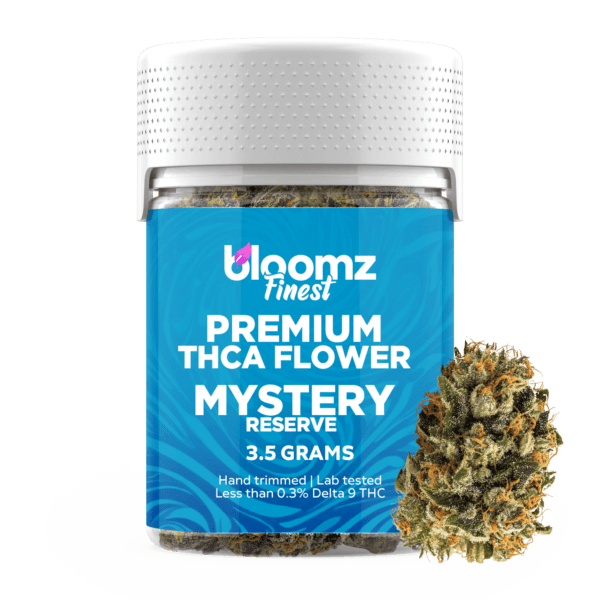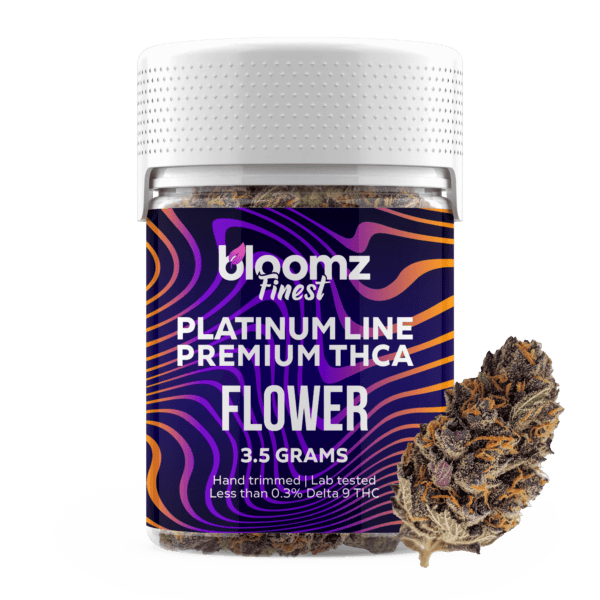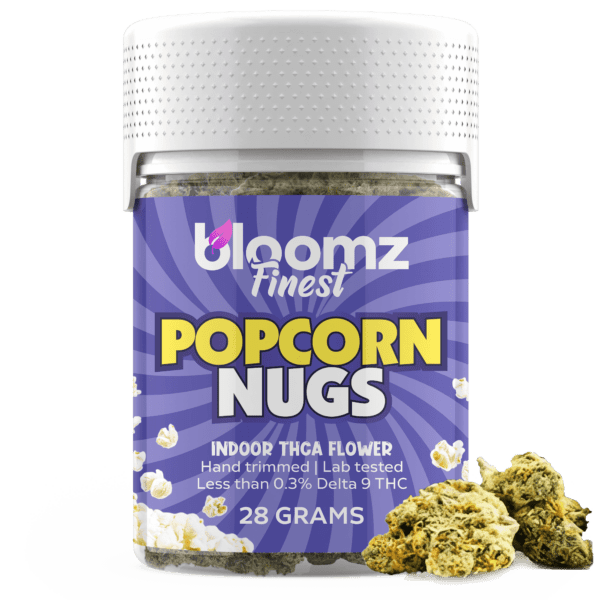In the grand and vibrant tapestry of cannabinoid offerings, where new threads are constantly being spun and woven into existence, a unique and intriguing pattern has emerged from the loom of modern science. This novel thread is HHC, a cannabinoid prized for its remarkable molecular stability and its distinctively uplifting hue, which has been expertly crafted into a new class of products, most notably HHC flower.
The appearance of this innovative material has naturally sparked a fascinating and absolutely essential comparison with the well-established, richly dyed, and deeply familiar fabric of the regulated cannabis world: the potent and diverse array of products found on the pristine shelves of a licensed dispensary, often referred to as Dispensary THC.
This is not merely a question of comparing two different types of cloth; it is a profound exploration of two distinct philosophies of production—the meticulous art of enhancing and fortifying a natural fiber versus the time-honored tradition of cultivating and curating a masterpiece directly from the earth, under the watchful eye of strict regulation.
To Buy HHC Flower Click Here
Recommended products
Why It’s Important to Breakdown the Matchup of HHC Flower vs. Dispensary THC
To become a truly discerning and confident connoisseur in the rapidly evolving modern cannabinoid marketplace, it is of the utmost importance to break down the detailed matchup between HHC flower, and the array of products found in licensed dispensaries, commonly referred to as Dispensary THC. These two categories, while both capable of producing a psychoactive effect, represent fundamentally different approaches to creation, are governed by separate and often contradictory legal codes, and offer experiences that are unique in both character and intensity.
The new landscape of hemp-derived cannabinoids, made possible by the 2018 Farm Bill, is filled with innovative but complex products like HHC. Without a clear and detailed understanding of their differences, a consumer might inadvertently choose a product that doesn’t suit their desired experience, leading to mismatched expectations, potential safety concerns, and a misunderstanding of the very nature of what they are consuming:
Understanding the Core Structural and Experiential Differences: At the heart of this comparison are two distinct primary psychoactive compounds: HHC (Hexahydrocannabinol) and the Delta 9 THC found in dispensary products. HHC is a hydrogenated form of THC, a chemical modification that changes its stability and how it interacts with the body. A detailed breakdown explains why HHC is often described as providing a more uplifting and energizing euphoria, generally considered to be less potent than Delta 9 THC but more potent than Delta 8. This knowledge is crucial for consumers to accurately anticipate the character of the experience and select the compound that best fits their desired mood and intensity level.
Clarifying the Vastly Different Production Methods: It is absolutely critical for consumers to understand that “HHC flower” and “dispensary THC flower” are produced in entirely different ways. Dispensary THC flower is a natural agricultural product, cultivated to produce its cannabinoids and terpenes entirely on its own, with stringent regulatory oversight. In stark contrast, HHC flower is a manufactured product. It is built by taking a foundational material—legal hemp flower—and then applying a coat of HHC distillate that has been created semi-synthetically in a lab. Understanding this core difference between a singular, naturally grown product and a composite, infused product is essential for evaluating its quality, consistency, and the importance of verifying its purity.
Navigating a Complex and Shifting Legal Landscape: The legal regulations for these two products are vastly different and often confusing. Dispensary THC, despite state legality, remains a federally prohibited substance, with its legality determined on a state-by-state basis. HHC, as a hemp derivative, exists in a contentious legal gray area under federal law. While its proponents argue for its legality under the Farm Bill because it is not technically “THC,” its intoxicating nature has led many states to specifically ban it. A thorough breakdown is essential for consumers to understand the specific laws in their area, ensuring they can make purchases that are compliant and avoid the significant legal risks in a rapidly changing regulatory landscape.
Promoting Safe and Responsible Consumption Practices: Given that the HHC market operates under the broader and less consistently regulated framework of the federal hemp industry, consumer education is the primary tool for ensuring safety. A detailed comparison encourages users to act as their own quality inspectors by demanding and carefully scrutinizing comprehensive, third-party lab reports (COAs). By explaining what to look for—potency, residual solvents from the hydrogenation process, and other contaminants—this breakdown gives consumers the tools they need to vet products for safety and quality, fostering a safer and more transparent market for everyone.
Understanding Retail Environments and Consumer Protections: The distinction between purchasing HHC flower, often available online or in convenience stores, and Dispensary THC, exclusively sold through state-licensed dispensaries, is paramount. Licensed dispensaries offer regulated products, professional guidance, and a controlled environment, providing robust consumer protections regarding product safety, potency verification, and responsible sales practices. The HHC market, by contrast, often lacks this level of oversight, placing a greater burden of due diligence on the consumer to ensure product quality and safety.
Contender #1: HHC Flower
Making a resonant and harmonious debut from the meticulous recording studio of modern cannabinoid chemistry, HHC flower has carved out a significant and highly respected niche for itself in the national marketplace. To the eye, it appears entirely familiar, often presenting as beautiful, aromatic hemp buds that are visually appealing and rich in their own native terpenes. However, its true character and defining feature lie not in the raw plant material itself, but in the potent and uniquely stable cannabinoid with which it is expertly infused.
HHC flower is not a botanical specimen that can be found growing in a field; it is a carefully crafted, multi-component product that represents a perfect fusion of high-quality hemp cultivation and a sophisticated laboratory process known as hydrogenation. It stands as a powerful testament to the ingenuity of the hemp industry, which has learned to modify and enhance cannabinoids to create novel experiences. For many, it has become a popular and accessible alternative, offering a uniquely uplifting and functional euphoria that exists in the desirable middle ground between the gentle effects of Delta 8 and the powerful intensity of traditional dispensary THC.
To properly understand the flower, one must first be introduced to the remarkable cannabinoid that serves as its namesake: Hexahydrocannabinol (HHC) – a semi-synthetic cannabinoid that is a hydrogenated form of THC, meaning that, in a laboratory setting, hydrogen atoms are added to the THC molecule, breaking one of its double bonds. This process of hydrogenation is the same one used to turn vegetable oil into margarine, and it has a profound effect on the molecule’s structure.
By saturating the molecule with hydrogen, its structure becomes significantly more stable and less susceptible to degradation from oxidation and UV light. This molecular stability is HHC’s defining characteristic. The cannabinoid itself was first created in the 1940s by the famed American chemist Roger Adams. While trace amounts of HHC can be found naturally in the cannabis plant, the amounts are far too small to be commercially extracted. Therefore, the HHC used in consumer products is created in a lab by taking legally-hemp derived THC (or CBD that has first been converted to THC) and subjecting it to this precise hydrogenation process.
With this crucial scientific context, it becomes clear that “HHC flower” isn’t a strain of cannabis that a farmer can cultivate to be naturally rich in HHC but instead, it’s a manufactured, composite, and infused product. The process begins with high-quality, legally grown hemp flower, which is naturally rich in CBD (cannabidiol) and contains less than 0.3% Delta 9 THC. This beautiful, terpene-rich flower provides the physical structure, the aromatic compounds that create the flavor and smell, and a host of other minor cannabinoids.
This foundational hemp flower then serves as the base which is meticulously infused or coated with a pure HHC distillate, the potent, honey-like oil created through the hydrogenation process. This infusion process is what elevates the simple, non-intoxicating hemp flower into a potent, psychoactive product, delivering the unique and sought-after effects of HHC in a familiar, smokeable format. The quality and safety of the final product are therefore entirely dependent on two separate but equally important factors: the premium quality of the initial hemp flower and the verified purity of the HHC distillate with which it is infused.
Recommended products
The creation of a high-quality and effective HHC flower is a multi-stage process that requires a perfect marriage of expert agricultural practices and precise, high-level laboratory techniques. Each and every step in this complex chain of production is critically important to producing a final product that is safe, potent, consistent, and enjoyable for the end consumer:
Sourcing of Premium, High-Grade Hemp Flower: The foundation of any good HHC flower is, without question, the base flower itself. The most reputable and quality-conscious producers start with organically grown, premium-grade CBD or CBG hemp flower. This flower is cultivated not for its cannabinoid content alone, but for its superior physical and aromatic characteristics: a dense and aesthetically pleasing bud structure, a vibrant and rich color, a very high natural terpene content to ensure a robust flavor and aroma, and smooth, clean-burning properties that are essential for a pleasant smoking experience.
Creation of Pure HHC Distillate via Hydrogenation: In a completely separate, highly controlled, and sophisticated laboratory setting, the HHC itself is created. This process begins with a pure, hemp-derived THC concentrate. This THC is then placed in a specialized reactor with a catalyst (often a noble metal like palladium) and is subjected to high pressure with hydrogen gas. This hydrogenation process breaks a double bond in the THC molecule and adds hydrogen atoms, converting it into the more stable HHC. The resulting crude HHC oil must then be meticulously purified through multiple stages of distillation and refinement to remove the catalyst and any unreacted reagents, resulting in a pure, potent, and clean HHC distillate.
The Artful and Consistent Infusion Process: This is the key manufacturing step where the agricultural product (the flower) and the laboratory product (the distillate) are carefully combined into a single, cohesive item. There are several proprietary methods for this infusion. A common technique involves gently heating the thick HHC distillate to make it less viscous and then spraying it in a fine, even mist over the hemp buds as they are gently tumbled. More advanced methods may involve solventless cryo-infusion or vacuum infusion to ensure a deeper and more even penetration of the HHC into the flower material without oversaturating it.
Essential Curing and Thorough Quality Control: After the infusion process, the now-sticky and enhanced buds must be allowed to properly cure. This critical step ensures that the HHC distillate is evenly absorbed and that any excess moisture has evaporated, which is crucial for a smooth, even burn and the long-term stability of the product. During this phase, dedicated quality control teams will visually inspect the product for consistency and take numerous samples for in-house testing to ensure that the HHC potency is accurate and evenly distributed throughout the batch.
Final, Full-Panel Third-Party Laboratory Testing: As the final and most important step for ensuring consumer safety and transparency, representative samples from every finished batch of HHC flower are sent to an independent, accredited, third-party laboratory. This lab conducts a full-panel analysis, which is then published in a Certificate of Analysis (COA). The COA provides a detailed breakdown of the cannabinoid potency, verifying the HHC content and the legal compliance of the Delta 9 THC level, and crucially, it also screens for any harmful contaminants, including residual solvents, heavy metals, pesticides, and the catalyst used in hydrogenation, providing a final stamp of safety for the consumer.
The HHC flower market offers a robust variety of product types and formats, closely mirroring the traditional cannabis market to provide options for a wide range of consumer preferences. This selection allows individuals to choose a product that aligns with their budget, their desire for convenience, and their preferred method of consumption. While the core product is always a skillful combination of premium hemp flower and potent HHC distillate, these different forms below it takes can significantly shape the user experience:
Indoor HHC Flower: This category represents the top-shelf, connoisseur-grade offering in the HHC flower world. The process begins with exceptionally high-quality CBD or CBG hemp flower that has been cultivated indoors in a perfectly controlled and optimized environment. This meticulous cultivation results in a base flower that is dense, visually stunning with a thick coating of its own natural trichomes, and exceptionally rich in a complex profile of terpenes. When this premium-grade hemp is carefully and evenly infused with pure HHC distillate, it creates a final product that is celebrated for its superior, nuanced flavor, its remarkably smooth smoke, and its potent, well-rounded, and highly consistent effects.
Outdoor HHC Flower: To create a more accessible and budget-friendly option for a wider range of consumers, producers often utilize high-quality, sun-grown CBD or CBG hemp flower as the foundational material. While outdoor flower may have a slightly less manicured or “perfect” appearance and a more rustic, earthy terpene profile compared to its indoor-grown counterpart, it can still be incredibly flavorful and effective when cultivated with care. When infused with the same pure HHC distillate, it becomes a highly effective and enjoyable product that offers fantastic value for consumers who prioritize the final end effect over pristine aesthetic qualities.
HHC Small Buds: Often referred to simply as “smalls,” this product consists of the smaller, often popcorn-sized buds from a premium hemp harvest that have been infused with HHC. It is important to understand that these are not lower-quality buds in terms of their chemical makeup; they simply grew on the lower branches of the plant and did not get as large as the top colas. By infusing these small but still potent and terpene-rich hemp buds with HHC distillate, producers can offer a product that delivers the full flavor and potency of the premium nugs but at a more economical price point, making it a favorite among regular users.
HHC Moonrocks: These are a high-potency, artisan specialty product designed for those with a significant tolerance or for users seeking a particularly powerful and long-lasting experience. The creation of an HHC Moonrock is a triple-layered infusion process. It starts with a solid, premium hemp flower bud, which is then generously coated in a thick, sticky layer of highly potent HHC distillate. Before this powerful layer can dry, the entire gooey bud is thoroughly rolled in a powdery, blonde layer of pure CBD or CBG kief (the concentrated, sifted resin glands from the hemp plant). This creates a super-concentrated, dense, and slow-burning product that is incredibly potent and flavorful.
HHC Pre-Rolls, Blunts & Joints: Offering the ultimate in user convenience and ease of use, HHC pre-rolls are ready-to-smoke products that have been professionally filled and rolled with high-quality ground HHC-infused flower. They completely eliminate the need for any consumer preparation, such as owning a grinder, buying rolling papers, or possessing the skill to roll a proper joint. Available in a wide variety of strains and sizes and often packaged in single, portable, and odor-proof tubes, pre-rolls are the perfect, hassle-free, grab-and-go option for social settings, travel, or any time a simple, straightforward experience is desired.
When you see a familiar “strain” name, such as OG Kush or Sour Diesel, associated with an HHC flower product, it is fundamentally important to understand that this name is referring to the genetic strain of the base hemp flower that was used in its creation, before the infusion of the HHC distillate. The primary psychoactive and intoxicating effects will be driven by the infused HHC concentrate.
However, the more subtle, nuanced, and aromatic aspects of the overall experience—the specific flavor profile that greets the palate, the quality and character of the aroma that fills the air, and the gentle modulations in mood that form the undertones of the powerful experience—are all determined by the unique profile of aromatic terpenes that were naturally produced by the original CBD or CBG strain. The best producers carefully select foundational hemp strains that’re recognized to have robust, desirable, and potent terpene profiles in order to create a more sophisticated, flavorful, and enjoyable final product, using the familiar families of:
Indica: When an HHC Flower product is marketed under an Indica strain name, it signifies that the base hemp flower used in its creation was an Indica-dominant genetic variety, known for its relaxing and calming characteristics. These hemp strains are typically rich in a profile of terpenes like myrcene, linalool, and beta-caryophyllene, which are well known for producing earthy, musky, floral, and sometimes spicy aromas, and are often anecdotally associated with deeply calming and sedating sensations. The intended experience of an Indica-labeled HHC flower is a powerful synergy between the calming and soothing terpene profile from the flower and the pronounced physical relaxation provided by the HHC molecule itself, resulting in a product that is designed for deep, tranquil relaxation.
Sativa: An HHC flower product that is sold under a Sativa strain name has been crafted using a Sativa-dominant hemp variety as its base. These specific hemp strains are often very high in terpenes like terpinolene, limonene, and pinene, which are famous for contributing to bright, zesty, sweet, citrusy, and sharp piney aromas that many users find to be uplifting and energizing. The invigorating and fruity terpene profile of the Sativa flower is strategically combined with the uniquely euphoric and stimulating cerebral effects of HHC to create an experience that is intended to be incredibly uplifting, creativity-enhancing, and suited for high-energy pursuits or deep, focused artistic immersion.
Hybrid: Hybrid HHC flower products are created by utilizing a hybrid hemp strain as the foundational material, which by definition offers a balanced and often highly complex profile of terpenes derived from both its Indica and Sativa parentage. These strains are carefully chosen by producers for their well-rounded, multi-layered, and universally appealing aromas and flavors. The primary goal of a Hybrid HHC flower is to provide a versatile experience that delivers the powerful effects of HHC accompanied by a rich and satisfying terpene profile that is neither excessively sedating nor overly stimulating, making it a popular choice for experienced users who want the best of both worlds.
The legal status of HHC in the United States is exceptionally complex and exists in a state of profound legal ambiguity and flux. Its claim to legality is derived from the 2018 Farm Bill, which federally legalized hemp and its derivatives, so long as they contain less than 0.3% Delta 9 THC. Because HHC is not technically a “THC” molecule (it is a hexahydrocannabinol, not a tetrahydrocannabinol), and it is derived from hemp, its proponents argue that it is a federally legal hemp product that falls outside the scope of laws targeting THC isomers. However, this is a tenuous legal argument that is heavily contested.
The DEA has stated that synthetically-derived cannabinoids are illegal, and since HHC is created through a chemical process (hydrogenation), it is often considered semi-synthetic. Furthermore, its intoxicating nature has caused many states to take regulatory action to ban HHC either explicitly by name or by including it in broader bans on all intoxicating or synthetically derived cannabinoids, lumping it in with Delta 8 and THC-P. Therefore, while HHC may be available for purchase online, its legality is far from guaranteed and is subject to a chaotic and shifting patchwork of state laws and federal interpretations, making it a legally risky product to possess in many jurisdictions.
Recommended products
HHC flower is used by consumers for the purpose of achieving a unique and enjoyable psychoactive experience, one that is often sought for its balance of euphoria and functionality. The methods of consumption are identical to those used for traditional cannabis, relying on the application of heat to aerosolize the active compounds for inhalation or to prepare it for oral ingestion. The choice of consumption method below typically depends on the user’s preference for the speed of onset, the duration of the effects, and the overall character of the experience they are seeking:
Vaping (using a portable or desktop vaporizer): Vaping is widely considered to be an exceptional method for consuming HHC flower, primarily because it offers a cleaner, smoother, and significantly more flavorful experience than traditional smoking. A modern dry herb vaporizer is a sophisticated device specifically designed to heat the infused flower to a precise, user-controlled temperature. This temperature is hot enough to efficiently vaporize the HHC and the delicate, aromatic terpenes without actually causing the plant material to ignite and combust. This process creates a flavorful, cannabinoid-rich vapor that is generally considered to be less harsh on the lungs than hot, acrid smoke.
Smoking: This remains the most straightforward, traditional, iconic, and culturally resonant method of consumption. By smoking the HHC-infused flower in a rolled joint, a classic pipe, or a water pipe (often called a bong), the user applies intense, direct heat from a flame. This rapid heating process instantly and effectively vaporizes the HHC distillate for immediate inhalation deep into the lungs. The effects from smoking are typically felt within just a few minutes, which allows for very easy, intuitive, and real-time dose titration based on the user’s immediate feedback.
Cooking/Baking: HHC flower can certainly be used as the primary ingredient to create potent and long-lasting homemade edibles. Because HHC is already in its active form, it does not need to be decarboxylated like THCA. However, the base hemp flower is likely rich in the acidic cannabinoid CBDA. Therefore, if the user wishes to also gain the well-known benefits of activated CBD in their final edible product, they would still need to go through the decarboxylation process (gently baking the flower at a low temperature) to convert the CBDA into CBD. After this optional but recommended step, the fully activated flower can be infused into a fat like butter or coconut oil and then used in any number of culinary recipes.
The overall effects of HHC flower are what truly define its unique and highly appealing place in the modern cannabinoid market. The experience is driven by the HHC molecule, which is actually a mixture of two different enantiomers (mirror-image molecules) created during the hydrogenation process. One of these, 9R HHC, binds effectively to the CB1 receptors, while the other, 9S HHC, does not bind as well. The ratio of these two molecules can affect the overall potency of the final product. Generally, HHC is considered to be less potent than traditional Delta 9 THC, but more potent than Delta 8 THC, placing it in a desirable “sweet spot” for many users.
The character of the high is frequently described as being more Sativa-like, regardless of the base strain’s terpenes. Users often report a clear-headed, uplifting, and energizing euphoria, with less of the potential for the heavy, sedating body load that can sometimes accompany Delta 9 THC. This makes it a popular choice for daytime use, social gatherings, and creative pursuits, as it can provide a blissful and stimulating experience without significant cognitive impairment.
Pros & Cons
As with any novel, semi-synthetic cannabinoid product, HHC flower comes with a very distinct set of advantages and potential disadvantages. It is essential for any prospective consumer to carefully weigh these points, as they touch upon everything from its uniquely stable molecular structure and appealing effects to the significant and valid concerns surrounding its manufacturing process and its highly volatile and uncertain legal status in the United States.
Pros:
Enhanced Molecular Stability and Longer Shelf Life: The most unique and scientifically significant advantage of HHC is its superior molecular stability. The process of hydrogenation saturates the molecule, making it far less susceptible to degradation from oxidation and UV light. This means that HHC products, including HHC flower, have a much longer shelf life than THC products and are less likely to lose their potency over time when stored properly.
A Balanced and Uplifting Euphoric Experience: Many users report that HHC provides a uniquely pleasant and balanced psychoactive experience. It is often described as being more uplifting, energizing, and euphoric than Delta 8, yet less intense and anxiety-provoking than Delta 9 THC. This places it in a desirable middle ground, offering a blissful and functional “high” that many find perfect for social and creative activities.
Potency in a “Sweet Spot”: For a large segment of consumers, HHC’s potency level is a major advantage. It is generally considered to be stronger and more effective than Delta 8 THC, providing a more substantial and satisfying experience. However, it is also perceived as being gentler and more manageable than the sometimes-overwhelming power of high-THC traditional weed, making it an ideal compromise for intermediate users.
Quasi-Legal Accessibility in Certain Markets: As a hydrogenated hemp derivative that is not technically a “THC,” HHC has, in some jurisdictions, occupied a unique legal loophole. This has allowed it to be sold online and shipped to states where THC isomers like Delta 8 have been banned, providing a legal or quasi-legal avenue for adults in some restrictive areas to purchase an intoxicating cannabinoid product.
Less Intense Than Delta 9 THC: For individuals who are sensitive to the powerful effects of traditional weed or had uncomfortable experiences with it in the past, HHC offers a less intense alternative. The reduced potential for the anxiety, paranoia, or “couch-lock” that can sometimes be associated with Delta 9 THC is a significant benefit for many users, allowing for a more consistently positive and comfortable experience.
Convenience of Online Shopping and Home Delivery: The ability for consumers to purchase HHC flower online and have it shipped discreetly to their doorstep offers a level of convenience and privacy that the traditional, highly regulated dispensary model often cannot match. Customers can browse an enormous selection of products from a multitude of brands, compare prices, and read customer reviews, all from the comfort of their own home.
A Novel Cannabinoid for Experienced Users: For seasoned cannabis connoisseurs who have explored the full range of traditional THC experiences, HHC offers something new and different. Its unique Sativa-like character and distinct euphoric signature provide a novel and interesting profile of effects to explore, adding a new dimension to their understanding of cannabinoids.
Synergy with CBD and Terpenes: Because HHC flower is created by infusing a high-quality CBD or CBG hemp flower, the final product offers a synergistic blend of compounds. The consumer gets to experience the psychoactive properties of HHC alongside the rich and flavorful terpene profile and the non-intoxicating, balancing properties of the CBD and other minor cannabinoids present in the base flower, creating a well-rounded “entourage effect.”
A Functional, Less Sedating High: A frequently reported benefit of HHC is that its effects are less sedating and debilitating than high doses of Delta 9 THC. Many users find that they can remain active, engaged, and productive while still enjoying the euphoric and mood-lifting properties of the cannabinoid, making it a more functional choice for daytime use.
Showcases Scientific Innovation in the Hemp Industry: The development and popularization of HHC highlight the incredible scientific innovation that is occurring within the modern hemp industry. It demonstrates the ability of chemists and producers to isolate, understand, and modify cannabinoids to create new molecules with unique and desirable properties, pushing the boundaries of what is possible with the cannabis plant.
Cons:
A Highly Precarious and Uncertain Legal Status: Despite some clever legal arguments, the status of HHC is extremely precarious. As an intoxicating and semi-synthetic cannabinoid, many states have moved to ban it alongside Delta 8 and other hemp-derived psychoactive substances. The federal government’s stance is also unclear, creating a significant legal risk for consumers who purchase or possess HHC products.
Significant Concerns Regarding Safety and Purity: The national market for novel hemp-derived cannabinoids like HHC is significantly less regulated and scrutinized than the state-legal cannabis markets. The complex and multi-step chemical synthesis required to create HHC carries a risk of producing unwanted byproducts or leaving behind residual catalysts (like heavy metals) if the process is not performed and purified to the absolute highest standards.
A Profound Lack of Scientific and Clinical Research: HHC has been known to science for decades, but it has only been on the consumer market for a very short time. As a result, there is a profound lack of modern scientific and clinical research on its short-term and, more importantly, long-term effects on human health. Consumers are venturing into territory with a molecule whose full safety profile and long-term health implications are not yet understood.
An Infused and Manufactured, Not a Natural, Product: It is essential for consumers to remember that unlike traditional cannabis, HHC flower is not a product of nature alone; it is a multi-step, manufactured item. This infusion process can sometimes lead to an inconsistent product. An uneven spray of the sticky distillate can result in “hot spots” on the flower with a much higher concentration of HHC, leading to an unpredictable and potentially overwhelming experience.
Contender #2: Dispensary THC
Making its confident and fully regulated entrance into the modern cannabinoid arena, Dispensary THC represents the pinnacle of a legally established, rigorously tested, and professionally curated cannabis experience. Far from the unregulated avenues of online hemp-derived products, “Dispensary THC” refers to the diverse array of cannabis products—predominantly featuring the powerful Delta 9 THC—that are exclusively available for purchase from licensed, state-regulated dispensaries.
These brick-and-mortar establishments, whether catering to medicinal patients or adult recreational consumers, operate under a comprehensive framework of strict government oversight, ensuring unparalleled product safety, verified potency, and responsible sales practices. It is a category defined not just by the potent cannabinoid it contains, but by the entire ecosystem of legality, quality control, and professional guidance that surrounds its sale and consumption, offering consumers a level of assurance and a range of choices unmatched by any other segment of the cannabis market.
To truly understand the essence of Dispensary THC, one must first grasp the concept of what a dispensary truly is within the landscape of modern cannabis. A cannabis dispensary is a legally sanctioned and heavily regulated retail establishment authorized by state and local governments to sell cannabis products to qualified individuals. These are not merely convenience stores or head shops; they are sophisticated, secure, and highly professional retail environments that operate under stringent licensing requirements. From the moment a cannabis plant is cultivated to the point it reaches a consumer’s hands, every step is meticulously tracked through “seed-to-sale” inventory systems.
Dispensaries are obligated to verify customer age and, in medicinal markets, patient credentials. They employ knowledgeable staff, often referred to as “budtenders,” who are trained to educate consumers about different products, strains, and consumption methods. In essence, a dispensary is the highly controlled, legal gateway through which consumers can access safe, tested, and reliable cannabis products, differentiating it entirely from the unregulated, often ambiguous markets for hemp-derived cannabinoids.
“Dispensary THC” specifically refers to the full spectrum of products available within these state-licensed retail environments that contain the primary psychoactive cannabinoid, Delta 9 THC, in concentrations that exceed the 0.3% legal limit for hemp. Unlike HHC, which is a semi-synthetic, hydrogenated cannabinoid derived from hemp and then infused onto flower, the Delta 9 THC found in dispensary products is a naturally occurring compound that is inherently produced by the cannabis plant itself.
This means that when you purchase flower from a dispensary, you are buying the actual, cultivated flower of the Cannabis sativa plant, rich in its native Delta 9 THCA (which converts to Delta 9 THC when heated), and a full complement of other cannabinoids and terpenes, all working together in what is known as the “entourage effect.” Beyond flower, dispensary THC encompasses a vast array of other precisely formulated products—such as edibles, concentrates, and tinctures—all meticulously manufactured from cannabis plants that naturally produce high levels of Delta 9 THC and rigorously tested to ensure accurate potency and purity. The defining characteristic of Dispensary THC is its origin directly from the cannabis plant, its high Delta 9 THC content, and the robust regulatory framework that governs its entire production and sales cycle within legal states.
The existence and operational structure of cannabis dispensaries in the United States are fundamentally bifurcated into two primary categories, reflecting the dual nature of state-level cannabis legalization efforts: those that exclusively sell medicinal THC products and those that cater to adult recreational THC consumers. In states with medical cannabis programs, dispensaries serve as a crucial access point for patients who have obtained a doctor’s recommendation or prescription for cannabis use. These medical dispensaries often require patients to possess a state-issued medical cannabis card, and sales are typically tax-exempt or subject to lower taxes than recreational sales. The focus is on providing specific cannabis products that cater to wellness needs, often with pharmacists or specialized staff on hand.
Conversely, in states that have legalized adult recreational use, dispensaries operate more like traditional retail stores, allowing any adult over the age of 21 to purchase cannabis products with a valid ID, much like purchasing alcohol. These recreational dispensaries are typically subject to higher taxes, which generate significant revenue for the state. Some states operate “vertically integrated” systems where a single license covers cultivation, processing, and retail, while others maintain distinct separation between these tiers. There are also “hybrid” dispensaries in some states that hold both medical and recreational licenses, serving both patient populations and adult consumers from the same location, often with different tax structures and purchasing limits for each.
The modern, state-legal dispensary offers a breathtaking and constantly evolving showcase of incredible and relentless innovation, providing consumers with a vast, diverse, and ever-expanding portfolio of product types that go far, far beyond the simple dried flower of a bygone era. This incredible evolution has transformed cannabis from a single, rustic, agricultural product into a highly versatile and sophisticated ingredient that can be masterfully crafted into a wide and dazzling array of high-quality consumer goods. These different formats provide a full and comprehensive spectrum of delivery methods, onset times, durations of effect, and levels of potency, allowing individuals to carefully and precisely tailor their cannabis experience to their specific needs, personal preferences, and lifestyles.
This explosion of choice and innovation has been absolutely instrumental in de-stigmatizing and normalizing cannabis consumption, making it a more accessible, appealing, and less intimidating option for a much broader mainstream adult demographic than ever before in history, from the most curious newcomer to the most seasoned and discerning connoisseur of the plant:
Flower (loose buds, pre-rolls, and joints): This remains the most classic, iconic, and perennially popular form of cannabis consumption, cherished by millions for its authenticity, the comforting ritual associated with its use, and the immediate and controllable effects it provides. Flower is the dried, meticulously cured bud of the cannabis plant, a critical post-harvest process that develops its final aroma, flavor profile, and overall smoothness. Consumers can purchase this versatile loose flower in various weights to smoke in traditional devices like pipes and bongs, or to grind up and roll into their own customized joints. For ultimate convenience and a guaranteed perfect smoke, dispensaries also offer an extensive selection of expertly crafted pre-rolls, which are professionally prepared and ready to smoke right out of the package.
Edibles (i.e. gummies, candies, and baked goods in particular): Edibles are any food or beverage product that has been precisely infused with a measured dose of cannabis extract, offering a completely smoke-free, discreet, and easy-to-use alternative to any form of inhalation. This category has seen meteoric growth in popularity, with gummies reigning as the undisputed champion due to their consistent dosing, long shelf life, appealing flavors, and ease of consumption. However, the variety available in modern dispensaries is nearly endless, including gourmet chocolates, hard candies, mints, infused beverages, savory snacks, and even full-course infused dining experiences. The effects of edibles are famously powerful and long-lasting due to the way THC is metabolized in the liver.
Pre-Filled Vape Cartridges: These products offer a perfect modern fusion of potency, convenience, and discretion, producing a flavorful vapor that is significantly less odorous and dissipates much more quickly than traditional smoke. A vape cartridge is a small, disposable tank filled with a variety of concentrated cannabis oils, which attaches to a rechargeable battery. These oils come in several forms, from highly refined and potent distillates to full-spectrum and live resin oils that preserve the complete, authentic terpene profile of the original strain. This variety allows consumers to choose between raw power and a more holistic, strain-specific effect in a highly portable and easy-to-use format.
Concentrates: Also known as extracts or “dabs,” this advanced and highly potent category includes a wide range of products created by extracting and concentrating the most desirable compounds—the cannabinoids and terpenes—from the cannabis plant. With THC levels that often range from 70% to well over 90%, concentrates like wax, shatter, budder, live resin, and rosin are generally intended for experienced users who are seeking a powerful, efficient, and immediate effect. They are typically consumed through a method known as “dabbing,” which involves flash-vaporizing a very small amount on a heated surface and inhaling the resulting pure and flavorful vapor for an experience that is both potent and incredibly rich in terpenes.
Tinctures: A classic, versatile, and highly underrated form of cannabis, tinctures are liquid extracts that are typically infused into a neutral carrier oil (like MCT oil) or a high-proof alcohol. They are sold in small, discreet glass bottles that come with a graduated dropper for incredibly precise and repeatable dosing, giving the user absolute control over their experience. Tinctures are most commonly administered sublingually (under the tongue), where the cannabinoids are rapidly absorbed directly into the bloodstream through the mucous membranes for a relatively quick onset of effects (typically 15-45 minutes) without any need for inhalation. They can also be easily and discreetly mixed into food or drinks like tea or smoothies, in which case they function more like a traditional edible with a longer onset time.
Topicals: For consumers who desire the localized effects of cannabis without any psychoactive experience whatsoever, topicals offer an ideal solution. These products include lotions, balms, salves, creams, and transdermal patches that are infused with cannabinoids, particularly THC and CBD. When applied directly to the skin, the cannabinoids interact with receptors in the skin cells, but they generally do not penetrate the bloodstream in significant enough amounts to produce any intoxicating effects. This makes them a perfect option for discrete, non-euphoric application, allowing users to experience the localized effects of the cannabis plant without any head-high.
The vast and diverse genetic foundation of the entire cannabis world, as presented in dispensaries, is built upon three widely recognized and fundamental classifications: Indica, Sativa, and Hybrid. These categories, while representing a simplification of the plant’s incredibly complex chemistry, provide a crucial, effective, and user-friendly framework for understanding and predicting the general characteristics and likely effects of a particular cannabis strain.
The terms themselves originate from botanical distinctions in the plants’ physical structures (morphology) and their geographical origins, which have, over centuries of human observation and cultivation, become strongly correlated with the typical suite of effects they produce upon consumption. For any consumer navigating the often-overwhelming menu of a modern dispensary, knowing whether a strain is an Indica, Sativa, or Hybrid is often the first and most important step in selecting a product that will successfully align with their desired experience, mood, and activity:
Indica: Strains designated as Indica trace their genetic heritage back to the rugged, high-altitude, and often harsh mountainous regions of the Middle East and the Indian subcontinent, like Afghanistan and Pakistan. To survive and thrive in these colder, more turbulent climates with shorter growing seasons, the plants evolved to be short, compact, dense, and bushy, with characteristically wide, dark-green leaves. In the world of cannabis effects, Indica strains are renowned and overwhelmingly associated with their profoundly relaxing and sedating qualities. They are most often described as providing a strong, full-body sensation that can feel deeply calming, tranquil, and comforting—an experience often referred to as a “body high.” These strains are the popular and logical choice for evenings and nighttime, ideal for unwinding after a stressful day, relaxing tense muscles, and preparing for a peaceful and restful night.
Sativa: Sativa plants, in stark botanical contrast, evolved in the warm, humid, and sun-drenched equatorial climates of the world, such as Central and South America, sub-Saharan Africa, and Southeast Asia. These plants adapted to the long, languid, and sunny growing seasons by becoming tall, thin, and lanky, with characteristically narrow, light-green leaves to better manage the heat and humidity. The effects typically associated with Sativa strains are just as distinct as their physical appearance and are often considered the polar opposite of Indicas. Sativas are celebrated for producing an energizing, uplifting, and cerebrally-focused experience. Consumers frequently report feeling more creative, focused, talkative, euphoric, and mentally stimulated after consuming a Sativa. These qualities make them a perfect companion for daytime activities, social functions, artistic endeavors, brainstorming sessions, or any activity that benefits from a significant boost of mental energy and an elevated mood.
Hybrid: Hybrid strains are the direct result of the intentional cross-pollination between Indica and Sativa plants, and they represent the vast majority of the cannabis strains available on the modern market. Expert breeders create hybrids to meticulously select and combine the most desirable and sought-after traits from both parent lineages into a single, new, and often superior strain. Hybrids can be Indica-dominant, Sativa-dominant, or a truly balanced 50/50 mix, and their effects are often described as the “best of both worlds,” offering a wide and nuanced spectrum of potential experiences. For example, a well-crafted hybrid might offer a pleasant and creative cerebral uplift from its Sativa side, which is beautifully complemented and grounded by a soothing, but not overly sedating, physical relaxation from its Indica heritage. This incredibly vast and versatile category offers the most tailored and specific effects, allowing users to find a strain that provides a precise experience for any occasion.
The legal status of dispensary THC in the United States is defined by a stark, persistent, and deeply consequential conflict between the unwavering and long-standing stance of the federal government and the evolving and increasingly permissive laws of an increasing number of individual states. At the federal level, cannabis (legally defined as “marijuana”) is still strictly and rigidly classified as a Schedule I controlled substance under the Controlled Substances Act of 1970.
This classification places it in the most restrictive category possible, alongside drugs like heroin and LSD, officially declaring that it has a high potential for abuse and no currently accepted medical use, thereby making its cultivation, sale, and possession a serious federal crime. In direct and historic defiance of this rigid federal prohibition, a significant and continually growing number of states have exercised their own legislative power to establish legal, safe, and highly regulated markets for both medical and recreational cannabis.
This has created a complex, bifurcated, and often confusing legal patchwork across the country, where legitimate businesses and their adult consumers can be in full and complete compliance with their detailed state and local laws while, at the same time, technically be in violation of federal law. This ongoing dichotomy creates numerous and significant systemic challenges for the legal industry and a complex legal reality for consumers, where the legality of their actions is entirely and completely dependent on their precise geographic location.
The overall effects of consuming Dispensary THC are a complex and multifaceted phenomenon, primarily orchestrated by its main psychoactive component, Delta 9 THC, and its intricate interaction with the body’s master regulatory network, the endocannabinoid system. When Dispensary THC is consumed and Delta 9 THC enters the body, it travels through the bloodstream to the brain, where it mimics the body’s natural endocannabinoids and binds to a vast network of cannabinoid receptors, most notably the CB1 receptors.
This binding action modulates the normal flow of neurotransmitters, leading to the wide range of profound physical and psychological effects that constitute the classic cannabis “high.” Users commonly experience a significant and often powerful sense of euphoria, a noticeable uplift in mood, and feelings of blissful contentment and deep well-being. The experience can also profoundly alter sensory perception, making music sound richer and more detailed, food taste more delicious and complex, and colors appear more saturated and vibrant.
Many people find that Dispensary THC induces a deep state of physical relaxation, melting away bodily tension and promoting a calm, comfortable, and “chilled out” disposition. The specific nature of the experience is highly dependent on the strain’s unique profile of cannabinoids and terpenes, the dosage consumed, the method of consumption, and the user’s individual biochemistry and psychological mindset.
Pros & Cons
Dispensary THC, as a product of a regulated cannabis market, comes with a clear and well-documented set of pros and cons, shaped by its natural origins, its potent effects, and its unique and paradoxical legal position in the United States. Its benefits are deeply rooted in its authenticity as a plant, the robust regulatory systems that govern it, and the sheer diversity of products it can be transformed into, while its drawbacks are largely defined by its ongoing federal illegality and the challenges that its powerful effects can sometimes present.
Pros:
Strict, Government-Mandated Safety Regulations and Testing: A paramount advantage of Dispensary THC is that all products sold through licensed dispensaries are subject to strict, comprehensive, and mandatory testing protocols by accredited third-party laboratories. This rigorous “seed-to-sale” regulatory oversight provides an unparalleled level of consumer protection, ensuring products are verifiably free from harmful contaminants like pesticides, heavy metals, mold, and residual solvents, and that potency is accurately labeled.
A Natural and Holistic Botanical Product: Dispensary THC, particularly in flower form, is a direct product of natural agricultural cultivation. The complex and synergistic array of hundreds of cannabinoids and terpenes are produced organically within the plant’s own trichomes. This authenticity is a significant draw for consumers who prioritize natural products, preferring a substance as close to its unadulterated state as possible, with all its components working in harmony.
Produces Potent, Powerful, and Nuanced Effects: For experienced cannabis users or those seeking a profound psychoactive experience, the high potency of Delta 9 THC in dispensary products is a major benefit. Its strong, well-understood psychoactive effects can produce a deep, enveloping, and multi-faceted sense of euphoria and bliss, often more intense and holistic than what is typically experienced with isolated cannabinoids, thanks to the robust “entourage effect.”
Unparalleled Diversity of Product Forms and Innovations: The mature, state-legal dispensary market is a hotbed of constant innovation, offering an unmatched variety of product types. Consumers can choose from a massive selection of precisely dosed edibles, fast-acting sublingual tinctures, convenient vape cartridges, soothing topicals, infused beverages, and an incredibly diverse menu of powerful concentrates, ensuring a product to suit any preference or lifestyle.
Access to In-Person Professional Guidance and Consumer Education: Licensed dispensaries provide consumers with invaluable direct access to trained, knowledgeable staff (“budtenders”). These professionals offer personalized consultations, answer complex questions about products, strains, and consumption methods, and guide users—especially newcomers—to a safe, positive, and enjoyable experience, which is crucial for responsible consumption.
A Rich, Diverse, and Well-Understood Genetic History and Lineage: Dispensary cannabis strains boast a long, cultivated history, resulting in thousands of well-known, genetically stable, and unique varieties with distinct characteristics. Iconic Indica, Sativa, and Hybrid strains have predictable and well-documented effects and terpene profiles, allowing consumers to reliably choose a product that will consistently deliver the specific type of experience they seek.
A Professional and Welcoming Retail Environment: Modern cannabis dispensaries have evolved into clean, highly secure, and sophisticated retail environments that resemble high-end boutiques or pharmacies. This safe, welcoming, and professional retail experience has played a crucial role in destigmatizing the act of purchasing cannabis and making it more comfortable and accessible for a mainstream adult audience, fostering a sense of legitimacy and normalcy.
Significant Driver of Economic Growth and Public Tax Revenue: The legal cannabis industry, powered by dispensary sales, generates billions in tax revenue for states, which can be allocated to vital public services like education, infrastructure, and community development. It also creates tens of thousands of well-paying jobs, stimulating local and state economies and establishing a legitimate, thriving sector.
Cons:
Overarching Federal Illegality and Its Ramifications: The most significant drawback is that cannabis, even if state-legal, remains illegal under federal law. This creates numerous legal and logistical challenges for businesses (e.g., banking restrictions, limited interstate commerce) and consumers (e.g., federal employment, housing, travel issues), creating a complex and often unfair legal dichotomy.
Strictly Limited Access Based on Geographic Location: Access to safe, regulated Dispensary THC is entirely dependent on living in a state where it is legal. This creates “cannabis deserts” and significant geographic disparities, forcing consumers in prohibitive states to either travel long distances, abstain, or resort to the unregulated illicit market, which lacks product safety and potency guarantees.
Higher Consumer Cost Due to Heavy Taxation and Regulation: Products purchased from dispensaries are often significantly more expensive due to substantial state and local taxes (which can be very high) and the high costs associated with rigorous regulatory compliance for businesses. This higher price point can be a significant barrier to access for many consumers, particularly those with lower incomes.
Potential for an Overwhelmingly Intense Experience: While desired by some, the high potency of modern Delta 9 THC in dispensary products can be a major con for others, especially new users or those with low tolerance. The intense psychoactive effects may lead to an uncomfortable experience, characterized by excessive euphoria, disorientation, or a strong “couch-lock” effect if too much is consumed.
How to Go About Choosing Which Option
Embarking on the journey to choose between HHC flower and Dispensary THC requires a thoughtful and honest evaluation of your personal preferences, your experience level with psychoactive substances, and the specific legal landscape of your location. This is not a simple contest to determine a single “winner,” but rather a nuanced and personal decision to find the product that is the right and responsible fit for you.
These two compelling contenders represent different points on the potency spectrum and are born from entirely different processes—one from the innovative world of laboratory chemistry, the other from millennia of agricultural tradition, now refined under modern regulation. By carefully considering the character of the experience you are seeking, your comfort with a manufactured versus a natural and regulated product, and the specific laws that govern your area, you can make a confident, safe, and well-informed choice.
The first and most important consideration in this process should be the type of experience you desire. Are you seeking a powerful, profound, and intensely euphoric high, an experience that has the potential to be deeply introspective and transformative, with a full spectrum of natural compounds? If so, the high concentration of the potent Delta 9 THC in dispensary cannabis is likely the better choice to meet those expectations, offering a robust and nuanced “entourage effect.”
However, if you are looking for a more moderate, functional, and uplifting experience—something that provides a clear-headed and energizing euphoria without the potential for the heavy sedation or the more intense, sometimes overwhelming feelings that can accompany Delta 9 THC—then the unique effects of HHC flower could be an ideal fit. It offers a way to enjoy a blissful and stimulating experience that many find to be a perfect middle ground.
Next, you should reflect on the nature of the products themselves, and which aligns better with your personal values and comfort level, particularly concerning safety and regulation. Do you have a strong preference for a natural, plant-based product that is consumed as it was grown, and critically, one that is backed by stringent, state-mandated third-party testing for purity and potency? If so, the regulated offerings of Dispensary THC align with this value, providing a high level of consumer protection.
On the other hand, if you are comfortable with and interested in products created through modern scientific processes, and you are prepared to perform extra due diligence in verifying third-party lab results yourself due to a less regulated market, then the manufactured nature of HHC flower will not be a concern. This choice often comes down to a personal philosophical preference for either natural simplicity with robust oversight or technological innovation with a higher degree of personal responsibility for vetting.
Finally, and most practically, you must assess your legal situation and accessibility. Do you live in a state with a legal, adult-use or medical cannabis market, and are you able to visit a licensed dispensary? If yes, you have the luxury of choosing between both products, and your choice can be based primarily on your desired effects and preference for regulation.
However, if you live in a state where dispensary THC is illegal or inaccessible, you must then investigate the specific laws regarding HHC. While it may be a legal option for you in a state that has banned Delta 8, it is crucial to confirm this, as many states have enacted broad bans on all intoxicating hemp derivatives. Your geographic location and its specific laws will ultimately be the most significant factor in determining which products are legally accessible to you and under what conditions.
|
Feature |
HHC Flower |
Dispensary THC |
|---|---|---|
|
Primary Psychoactive Compound |
HHC (Hexahydrocannabinol) – Infused |
Delta 9 THC – Naturally Occurring |
|
Nature of Product |
A manufactured product (hemp flower + HHC distillate) |
A natural, cultivated plant product (flower, extracts, edibles etc.) |
|
Relative Potency |
Moderate to High (Less than Delta 9, More than Delta 8) |
High (The standard potency benchmark for intoxicating effects) |
|
Typical User Experience |
Uplifting, euphoric, and clear-headed; often Sativa-like effects |
Potent, intense, and diverse high with nuanced effects; strong entourage effect |
|
Key Differentiator |
Highly stable molecule with a long shelf life |
Holistic “entourage effect” from a full spectrum of natural compounds |
|
Method of Creation |
Cannabinoids are hydrogenated and then infused onto hemp flower |
Cannabinoids are naturally produced by the cannabis plant during cultivation |
|
Federal Legal Status |
Legally ambiguous/precarious; often contested and banned by states |
Federally illegal (Schedule I Controlled Substance), state-legal in many areas |
|
System of Regulation |
Less regulated federal hemp market; quality/safety varies greatly by brand |
Heavily regulated by state agencies with mandatory seed-to-sale testing |
|
Primary Advantage |
Unique, functional high; excellent shelf stability; often more accessible in restrictive states |
Natural origin, holistic effects, robust safety testing, professional guidance |
|
Primary Disadvantage |
Uncertain legality and safety; lack of long-term research; inconsistent quality possible |
Federal illegality, can be too intense for some, limited geographic access, higher cost |
The Crafted Design and the Cultivated Grandeur: A Conscious Selection
In the final reckoning, the compelling comparison between HHC Flower and Dispensary THC illuminates the remarkable and ever-expanding diversity that now defines the modern cannabis landscape. It presents a fundamental choice between the meticulously crafted design of a novel, semi-synthetic cannabinoid experience, and the cultivated grandeur and regulated assurance of naturally derived Delta 9 THC. There is no singular, universal victor in this fascinating matchup; rather, the ultimate “best” option is a deeply personal selection, one that must be an authentic reflection of the specific type of euphoria you seek, your comfort level with different production methods, and the precise legal parameters within your own geographic locale.
By arming yourself with a comprehensive and sober understanding of their inherent differences in effects, methods of creation, and legal standing, you empower yourself to confidently and responsibly navigate your choices. This enables you to select the product—be it the innovative creation from the lab or the traditionally cultivated delight from a regulated dispensary—that is perfectly and safely tailored to your individual preferences and circumstances, ensuring an enjoyable and informed journey into the world of cannabinoids.
To Buy HHC Flower Click Here
Recommended products
-
THCA Flower – Indoor Exotics – Gold Line
$37.99$69.99 -
THCA Flower – Mystery Reserve
$41.99$79.99 -
THCA Flower – Platinum Line
$49.99$79.99 -
THCA Smalls
$149.99$256.99

